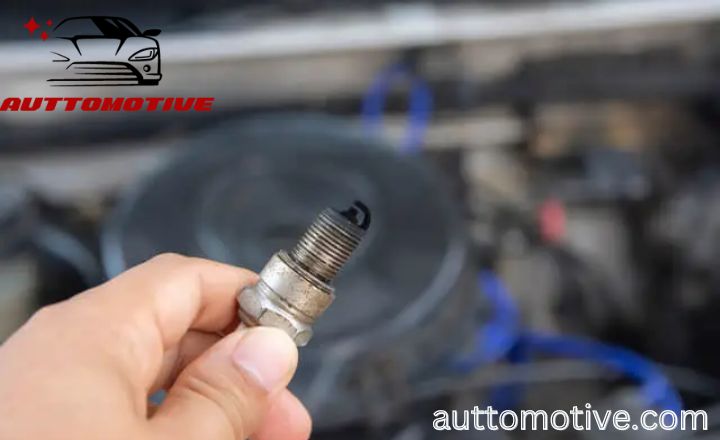There are many ways to stop spark plug wires from arcing. If you have an electronic ignition system, some devices will monitor the electrical signals and protect the spark plugs from being fired. If your car has a manual transmission, it’s essential to check the condition of the rubber boot on the torque converter. If it’s splitting or deteriorating, it will create sparks when you engage the gears. Here we’ll guide you on how to stop spark plug wires from arcing.
How to Stop Spark Plug Wires from Arcing
Arcing spark plug wires can be a significant headache for car owners. If left unchecked, they can result in costly repairs and even damage to your vehicle’s engine. Look for signs of wear and tear, such as cracks or abrasions on the surface. If you notice any damage, replace the wire immediately rather than risking further injury.

Ensure your spark plug wires from each other and other components in the engine bay. It will help prevent any electrical interference that could lead to arcing or misfires. Consider using dielectric grease on the ends of your spark plug wires to improve their conductivity and reduce arcing potential.
- The spark plug wires on the engine block near the plugs. They are usually color-coded and numbered. You should check the cables for damage or wear and replace them if necessary.
- Four screws hold the battery cover in place. Two on the top and two on the bottom. Once you can lift the battery cover.
- These wires may be causing the engine to overheat and should be inspected and replaced.
- If you notice your car’s wiring emitting sparks or blue smoke, it’s time to buy a new set of spark plug wires.
- Several things can cause arcing, but in most cases, it’s by damaged or corroded wires. If you notice any arcing, removing and replacing the cables with new ones is best.
Different Ways to Stop Spark Plug Wires from Arcing
Spark plug wires are an essential component of any engine that runs on gasoline. These wires reliably transmit electrical signals from the distributor to the spark plugs, igniting the fuel-air mixture in each cylinder. Over time, these wires can become worn and damaged, resulting in arcing or sparking. It can cause many problems, including reduced engine performance, misfires, and damage. There are several different ways to stop spark plug wires from arcing.

Way 1
One thing that often needs replacing is the spark plug wires. You’ll need to purchase the necessary items, which most hardware stores. The primary item you will need is spark plug wires, which come in various sizes and lengths depending on your vehicle model. Once you have carefully stripped off the old cables, wrap sandpaper around the new wire, this ensures enough friction between the line and spark plugs, which helps prevent missing or cross-firing of electrical signals.
Way 2
Having the right tools for any task is essential, especially for working with engines. Ensure the motor is completely cool to avoid potential hazards during the procedure. Once you’ve ensured your safety, it’s time to get started. Remove a spark plug to hold the spark stopper wire boot firmly and slide it off of the spark plug.
Ensure you maintain a proper grip on the wire boot, as it can be pretty slippery due to oil or grease residue. With one hand holding onto the indicator, use your other hand to unscrew the spark plug from its position in the motor. An important tip is to turn the spark plug counterclockwise while taking it out.
Also, ensure that you are getting optimal performance out of your car’s spark plug wires. It will help if you inspect them regularly for signs of damage. It includes looking for any cracks or cuts in the insulation covering the wire itself and checking for corrosion around where the wire connects to its respective terminal. If you notice any of these problems, you must take immediate action to address them.
Way 3
Spark plug wires play an essential role in your vehicle’s ignition system. Their primary function is distributing power from the battery to the spark plugs and ensuring a proper ignition sequence. Due to their constant exposure to heat, moisture, and other elements, spark plug wires are prone to arcing, which can cause significant damage. Arcing occurs when electrical current jumps from one wire to another or from a wire to the ground instead of flowing through the intended path.
It can lead to misfires, engine hesitation, or even complete ignition system failure. Worn-out spark plug wires can cause fires if they come into contact with flammable materials under your hood. If you suspect your vehicle’s ignition system is malfunctioning or your engine is frequently misfiring, you must check your spark plug wires for wear and tear.
Way 4
Removing the spark plugs and coil can be daunting for many car owners, but it is an essential maintenance procedure. Before removing the spark plug wire, examine how the clip holds it. If you see that the pin has it at an angle, try to change the tip of the coil bracket or put the hook in a different spot on the wire. This simple adjustment could help stop any arcing that is occurring.
If changing the tip or adjusting the hook position does not solve your problem, consider using a more substantial pin for the clip. A mechanic can also help diagnose further issues with your car’s ignition system if these techniques fail to improve your vehicle’s performance. Testing these methods before seeking professional assistance can save you time and money.
Way 5
If you want to improve the efficiency of your engine and avoid engine failure, it’s essential to prevent spark plug wires from arcing. Arcing occurs when there is a break in the wire’s insulation, which leads to a spark jumping from one wire to another. It disrupts the flow of current, causing misfires and reducing fuel efficiency. By applying grease to your spark plug wires, you can stop them from arcing and keep your engine running smoothly.
Silicone grease is an excellent option for preventing arc in spark plug wires because it has insulating properties that help maintain a consistent flow of electricity. It also helps protect against moisture, dirt, and other contaminants that can degrade or weaken the insulation on your spark plug wires over time.
Conclusion
The best way to avoid an arcing spark plug wire is to ensure your child is safe while you are driving. Keep your car in good shape and take care when working on it. Use the correct tools and safely disconnect and reconnect spark plugs. Knowing how to stop spark plug wires from arcing is essential, especially if you are driving is necessary. Following these simple tips can keep yourself and your passengers safe.
Frequently Asked Question
How do I know if my spark plugs are arcing?
If you have an “arc” or “spark” when you turn the key to start the car, it means one or more spark plugs are not firing. It can do various things, but it is usually due to a bad ground connection in the car.
How can I prevent my spark plugs from arcing?
Ensure the engine runs smoothly and the plug wires are correctly tight. Keep an eye on the spark plug heat range (the higher the number, the hotter the plug). Use quality spark plugs for your engine. Ensure no debris or metal particles are in the air intake or exhaust system.

